Why Visit Now: Barcelona
The reasons for visiting Barcelona now are the same as those that have inspired millions of travelers to do so over the decades, especially since the city rebranded itself after the 1992 Olympics, which helped put the city on the world tourist map.
There is an easy-going approach to life that’s infectious; even over a short visit, you’ll be charmed by a culture that defies expectations, about which most first-time visitors are unfamiliar.
Repeat visitors, meanwhile, will uncover fascinating layers with each trip. Whether it’s the Gothic Quarter or the Eixample (gridiron extension), the beaches or the suburbs built over the surrounding hills, Barcelona is a city of great contrasts. Founded in the 1st Century A.D., its urban fabric reflects the different peoples and invaders that have made this coastal city their home over the millennia, each leaving their mark, which can still be deciphered today as a mosaic of time and history.
Nevertheless, Barcelona does not rest on its laurels, nor is it a slave to its history. There is a restless spirit of innovation and invention that is unrivalled in other similar-sized European destinations. The same entrepreneurial spirit that inspired the extraordinary expansion of the city in the late 19th Century is still animating an explosion of culture and creative activities right now.
The rivalry between the Spanish capital city, Madrid, and Barcelona is palpable, especially during sporting events, but with its privileged setting on the Mediterranean, together with an enviable climate, the Catalan capital is a perennial favourite, and always will be.
Here, we will look at some of the different reasons why now is the perfect time to discover, or get reacquainted with, Barcelona. Featuring architecture, design, fashion, gastronomy, and more, we are going to whet your appetite and get you planning your trip.
1. Fashion Capital
The reason Barcelona exists as we know it today is due to the Industrial Revolution, specifically textile manufacturing, which was the backbone of the city’s economic wealth in the 1800s. Although textile manufacturing is no longer an important industry, Barcelona retains a vibrant fashion scene, with a great selection of shops and ateliers. There is a range of home-grown talent that capture the essence of Catalan character.
Shon Mott, for instance is a made-in-Barcelona clothes label featuring classic basics that reflect the sobriety, taste, and practicality of the local’s approach to dressing smartly. Bassal Store, also in the Eixample neighborhood, stocks a variety of local clothing and accessory brands where the emphasis is on sustainable manufacturing processes.
And just a few blocks away there’s a treat for lovers of costume jewellery, the tiny premises of La Mansoon Enric Granados, where 3D printed display cases mimic the architectural detailing of the historical building that houses the brand’s showroom. Influencers and celebrities have adopted these distinctive pieces into their wardrobes and catapulted the brand from relative obscurity in 2019 when La Manso was founded to a world stage.
For alternative vintage and emerging designers nowhere beats the Gràcia neighborhood where the streets and squares are filled with clothes shops showcasing quirky garments and accessories.
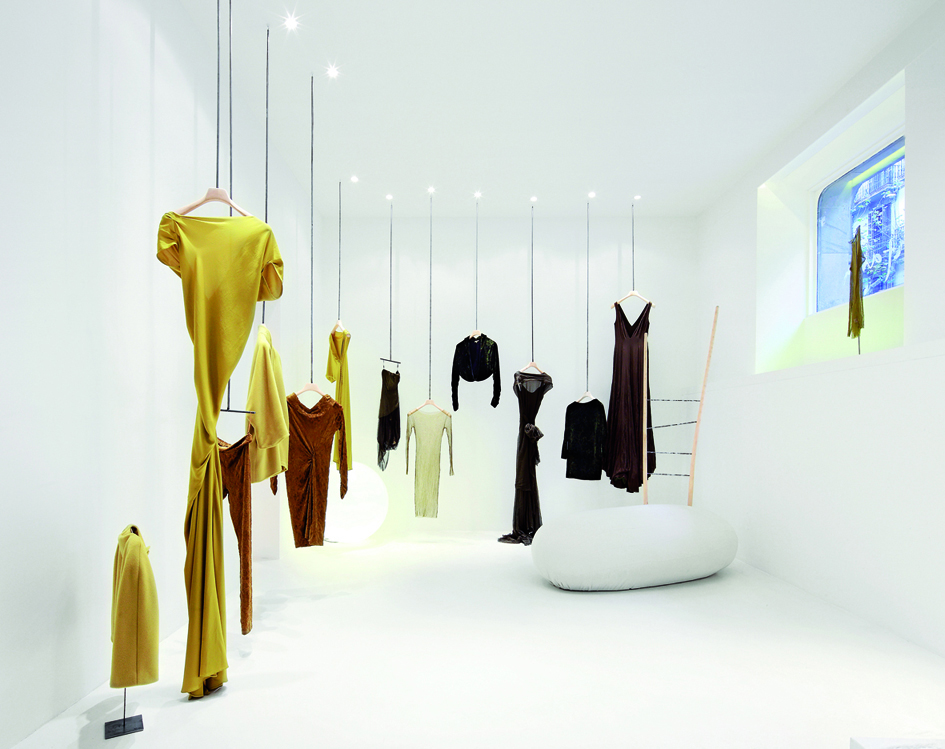 A modern sanctuary of style, Cortana's designer wear suspends in elegance, the palette and silhouettes echoing the essence of the Mediterranean. [Photo: Brian Gallagher]
A modern sanctuary of style, Cortana's designer wear suspends in elegance, the palette and silhouettes echoing the essence of the Mediterranean. [Photo: Brian Gallagher]Barcelona’s home grown couture labels offer unique clothing made to the highest standards of fabrics, materials and craftsmanship. For example, Cortana is a gorgeously designed showroom in the Eixample neighborhood, where Rosa Esteva, a high-profile women’s wear designer from Mallorca, captures the essence of the Mediterranean in her clothes and a selection of homeware.
The Norman Vilalta atelier on Enric Granados is a must-visit for shoe lovers, offering bespoke men’s handmade shoes; visitors can observe the creative process and meet the man himself. Another entirely different use of leather is found at Mietis, a brand that produces luxury leather goods including bags, the studio-atelier is worth making a detour to Poblenou where the products are beautifully showcased. Followers of high fashion can make a prior appointment at the Teresa Helbig studio to witness the creation of Barcelona haute couture, one of the few remaining ateliers in the city. By appointment only.
For further information, 080 Barcelona Fashion is the local platform promoting Catalan design; they organize the city’s Fashion Week, held twice yearly. See their website for 2024 dates and additional information.
2. Inventive, Constantly Evolving Food Scene
If you don’t investigate Barcelona’s food scene, then you are missing out on one of the city’s greatest cultural expressions.
Food is sacrosanct for the Catalans, to be discussed endlessly and enjoyed at all times of the day and night. However, it goes far beyond a source of sustenance; its theatre, social life, and hedonism all combined.
Right now, this year is an exceptional time to explore Barcelona’s culinary scene; after COVID, there has been an explosion in creativity. Rias KRU, for example, the classic seafood restaurant beside Barcelona’s trade fair pavilions on Montjuïc, is now a mecca of Asian and Mediterranean fusion. Since 2021, the restaurant has reinvented itself to reflect the city’s ongoing love affair with Asian cooking combined with the finest Mediterranean produce and sensibility.
 Enigma, the restaurant conceived by world renowned chef Albert Adrià combines high concept interior design and avantgarde gastronomy. [Photo: Brian Gallagher]
Enigma, the restaurant conceived by world renowned chef Albert Adrià combines high concept interior design and avantgarde gastronomy. [Photo: Brian Gallagher]Haute cuisine and avant-garde interior design feed off one another around the corner from Rias KRU at Enigma, directed by Albert Adrià (brother of Ferran, who directed El Bulli, which for years was considered the best restaurant in the world), taking diners on a literal tour of the two-story space designed by Pritzker Award-winning RCR Architects, based in Olot (interior of Catalonia). The interior and the food play with expectations and challenge the senses through a cutting-edge tasting menu.
For fans of more traditional fare, nowhere beats Botafumeiro, a favorite haunt of visiting celebrities whose photos cover the walls. Like walking onto a film set, the restaurant is a constant buzz with waiters and maîtres dashing about, satisfying customers’ appetite for fine dining. And for the ambience of a no-nonsense neighbourhood marisquería (seafood restaurant) it’s hard to beat Lluritu, a feast of the freshest catch of the day served in a no-frills interior where you’ll be surrounded by locals. Batea, a new entry, is offering a modern take on the marisqueria, combining experimental approaches with delicious results.
3. Catalan Gourmet Products
For a literal taste of Barcelona, and a great gift idea for taking home, visit Oro Liquido, a gourmet shop in the Gothic Quarter that only sells olive oil. You can sample the different varieties in their tasting area, and the packaging alone will have you salivating.
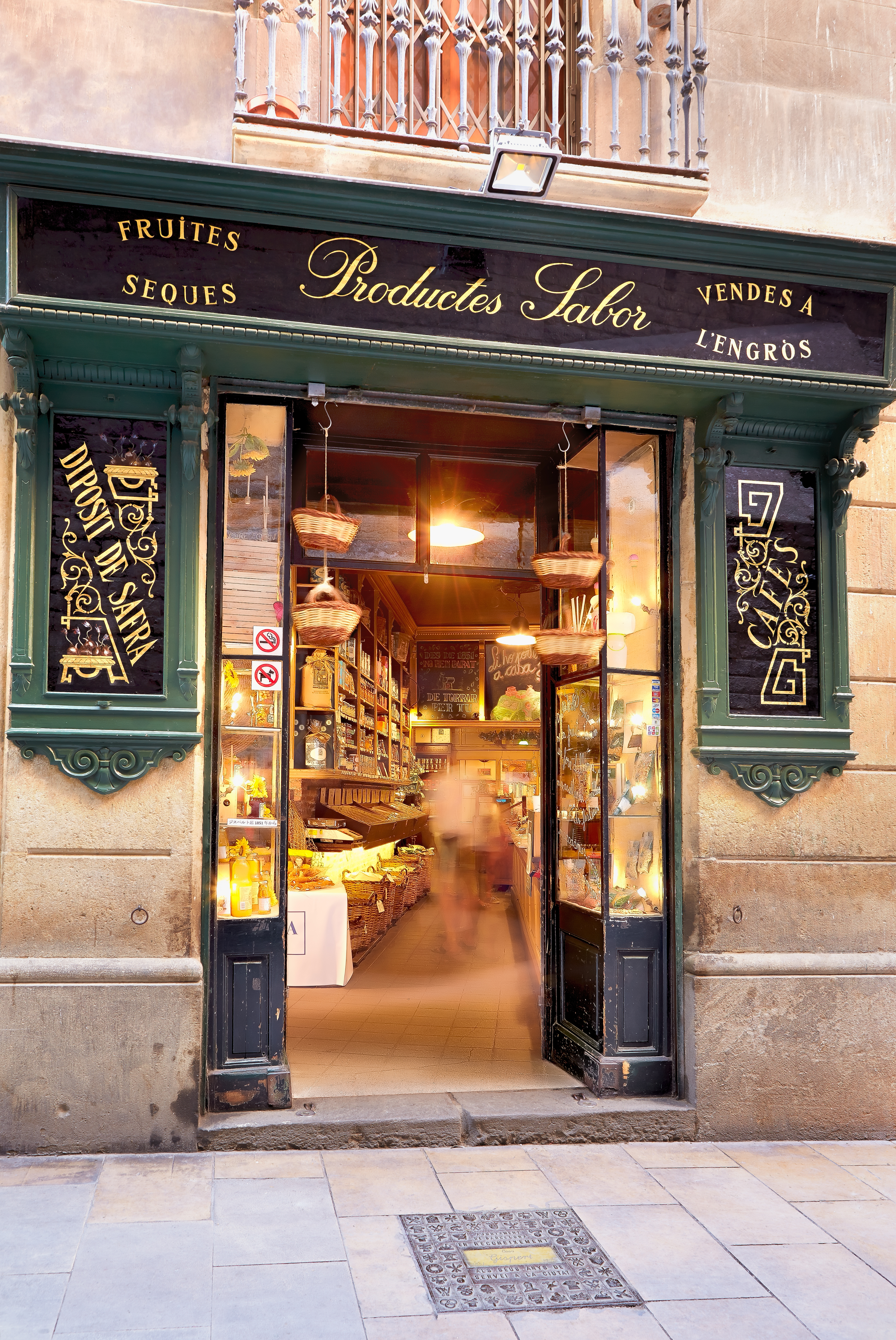 In the heart of Barcelona's historic streets, Casa Gispert beckons with the aroma of roasted nuts and exotic spices, a trove of culinary treasures dating back to 1851. [Photo: Brian Gallagher]
In the heart of Barcelona's historic streets, Casa Gispert beckons with the aroma of roasted nuts and exotic spices, a trove of culinary treasures dating back to 1851. [Photo: Brian Gallagher]A few minutes’ walk from there is the iconic Casa Gispert, a shop dating from 1851 that sells dry goods, nuts, seeds, and spices (including saffron, a key ingredient for the renowned paella dish). Its location on a side street behind Santa Maria del Mar transports you to a timeless warren of streets, where tapas bars and crafts shops jostle for the attention of passersby.
Wine lovers are spoilt for choice in the city center, with several shops that include a sommelier service to advise and recommend customers through their wine purchases. Mon Vinic is the most exclusive, a passion project of a local entrepreneur famous for his love of Catalan wines.
There are 17 distinct D.O.s (denomination of origin) in Catalonia, one of which is Priorat which can be visited in a daytrip and rewards visitors with gorgeous countryside and a memorable wine.
The specialty here is the Catalan wines that are not particularly known outside the region but are worth investigating under the tutelage of the on-hand sommeliers.
The Magatzem Escolà, on the other hand, stocks both wine and Spanish spirits and liqueurs in a warehouse-style space just opposite the El Born Centre de Cultura I Memòria, which is also worth a look for its archaeological remains of the medieval city that are open to the general public to contemplate.
4. Cocktail Culture
Gastronomy goes hand-in-hand with cocktail culture in Barcelona, and right now is the Golden Age of cocktails. Why now? Because in 2022, the city managed to take home 3 of the awards for the Top 50 Cocktail Bars in the world. In fact, Paradiso got the #01 spot, the first time ever a cocktail bar outside of London or New York was recognized with first place. The bar is a modern-day speakeasy with a clandestine entrance and an interior that recalls a steampunk vision of a contemporary Gaudí.
Sips is another contemporary option, awarded the #03 spot, where sybarites can sample a cocktail tasting menu inspired by gastronomic ingredients within a separate dedicated futuristic design. Of course, there are classic bars as well that evoke the long history of cocktail culture in Barcelona, like El Velodromo with its sumptuous double-height space. Or Tandem, the cocktail barman’s cocktail bar, where locals arrive after work midweek to sample Negronis and gimlets (as well as more contemporary creations).
5. Art Nouveau Architecture and Urban Design
Architecture and design are touchstones of Catalan culture; the city lives and breathes design, and it’s one of the great delights of visiting. There’s no single area that contains all the highlights; it’s spread throughout the greater metropolitan area, even the suburbs reward exploring.
Barcelona's Modernisme

Casa Vicens
Casa Vicens, one of Gaudi’s first commissions now fully restored and open to the public. [Photo: Brian Gallagher]

Casa Bures
Casa Burés embodies Barcelona's unique Modernisme, showcasing the city's flair for Art Nouveau with its intricate designs and artistic elegance. [Photo: Brian Gallagher]

Hospital de Sant Pau
Hospital de Sant Pau: Barcelona's Modernisme masterpiece, spectacularly restored to its former glory, stands as one of the city's most extraordinary architectural precincts. [Photo: Brian Gallagher]
In fact, in the early '90s, the Royal Institute of British Architects awarded Barcelona its Gold Medal, the first time a city rather than an individual architect was recognized. There’s no need to go in search of any specific buildings, however, although La Sagrada Familia is an exception; the city’s buildings will find you.
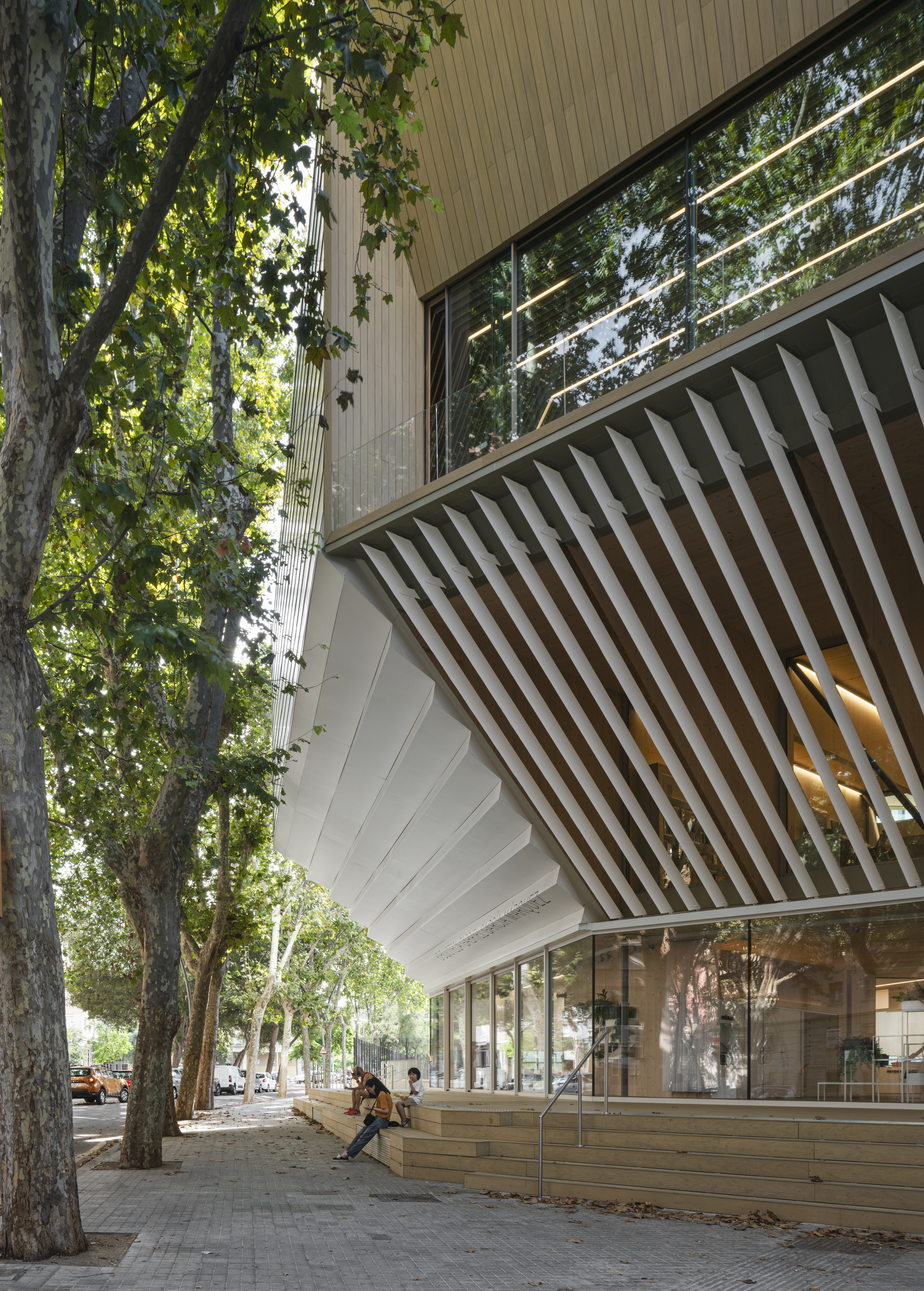 In 2023, the Biblioteca Gabriel García Márquez was voted the best library building in the world. [Photo: Brian Gallagher]
In 2023, the Biblioteca Gabriel García Márquez was voted the best library building in the world. [Photo: Brian Gallagher]The legacy of the Gilded Age is everywhere in the city center, known here as modernisme style, but more modern architecture is woven into the historic urban fabric as well. Many of the wonderful old buildings are today occupied by museums, shops, and hotels, which allows their spectacular interiors to be appreciated as well as their external expression.
Just walking the streets is a pleasure if you are receptive to engaging with your surroundings and looking beyond its beauty. Last year, the recently finished Biblioteca Gabriel García Márquez building in a suburb just a 20-minute metro ride from the center was recognized as the world’s best library.
And right now, the Ejes Verdesor newly pedestrianized network of city center streets is a must-see; although controversial, there’s no denying the power of removing the priority from cars to create a much more user-friendly way of moving around Barcelona.
6. New Frontiers in Contemporary Art
Culture vultures and especially art lovers are spoilt for choice in Barcelona right now, thanks to frenetic activity over recent years with new openings, visitor-friendly museums, and galleries with fascinating collections.
One example is the Museu de l’Art Prohibit (Censored Art Museum), a private collection belonging to a local media mogul that occupies a historical residential building in the city center, now converted into a gallery. Thought-provoking works are exhibited within an exquisitely restored series of rooms that are reason enough to visit, the project was only recently completed in late 2023.
And of course, there are the existing options like the Picasso Museum, the Fundació Joan Miró, and the Fundació Antoni Tàpies, all of which are accommodated within a diverse range of structures that perfectly frame and explain their works. All these painters had strong links to Barcelona, which helps explain a deeper understanding of their work, inspired by the light, the people, the cityscape, and the iconography of the city.
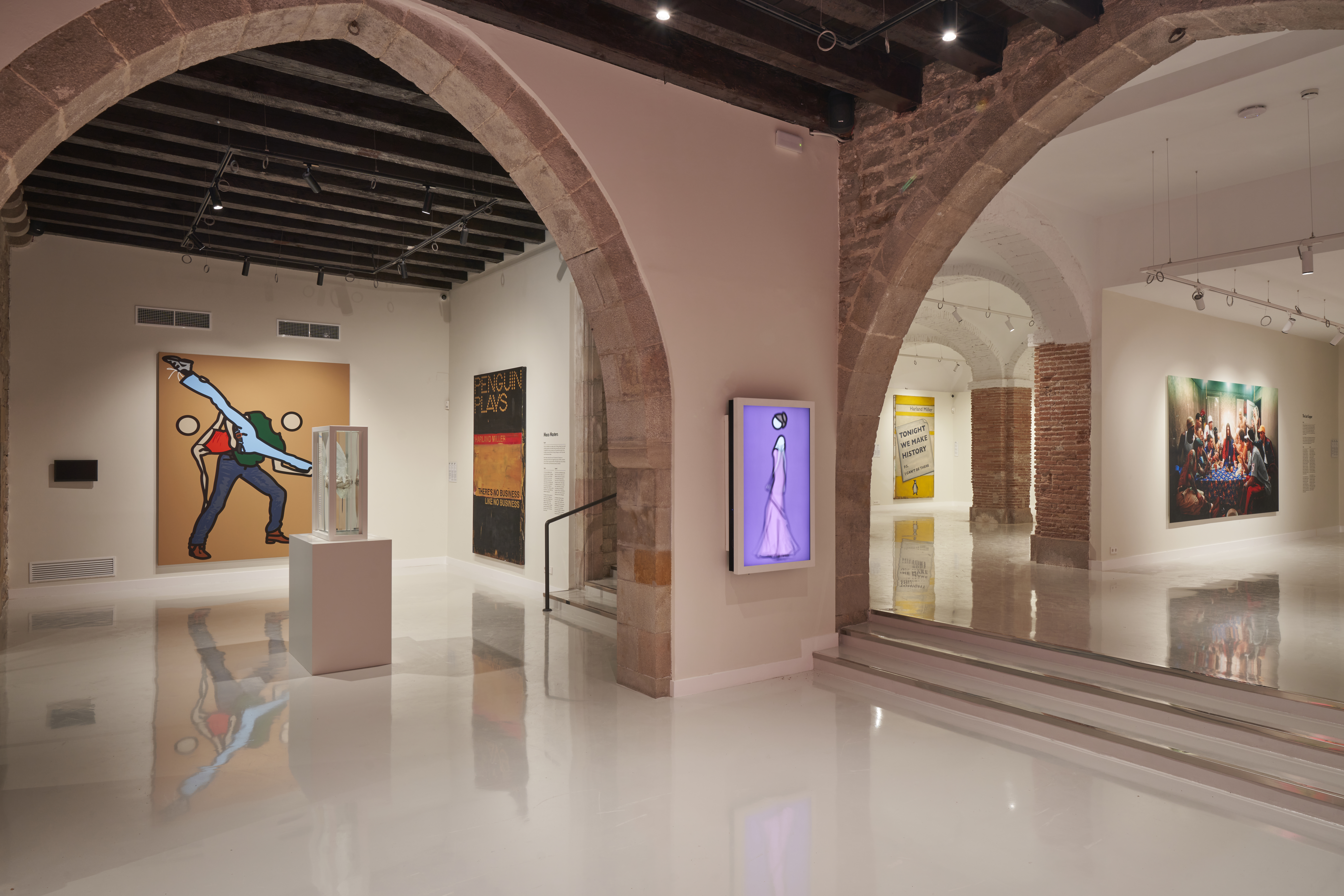 Moco the most recent addition to Barcelona’s contemporary art museums. [Photo: Brian Gallagher]
Moco the most recent addition to Barcelona’s contemporary art museums. [Photo: Brian Gallagher]The Moco Museum is a newcomer, a private gallery in the Born neighbourhood that has an extensive collection of contemporary art by many living artists and 20th-century masters. It dominated the headlines last summer when the Obamas paid a visit during their tour of Barcelona.
7. Music of Every Genre
The range of music, dance and theatre venues in the city is dizzying, from high brow to low brow and everything in between.
Travellers should consult the Teatro del Liceu (Barcelona’s opera house) programme before making any arrangements, even if you are not a fan of opera the building is worth exploring. Located on the Ramblas, Barcelona’s most iconic street right beside an eponymous metro stop, the historical structure constructed in 1844, could tell many tales of its own from ghosts to fires, to political assassinations. But nowadays the excitement is confined to the performing arts. Opera productions from around the globe come to the Liceu and the theatre is rightly renowned for its beauty and acoustics.
Palau de la Música Catalana

Stained Glass Skylight
The skylight is Palau's crowning jewel, casting vibrant hues that animate the concert hall's interior, and symbolize the sun. [Photo: Vinitaa Jayson]

Auditorium Grandeur
The sweeping interior of the auditorium, where historic architecture meets acoustical brilliance. [Photo: Vinitaa Jayson]

Column Detail
This column showcases the intricate craftsmanship of Lluís Domènech i Montaner, blending sculpture, mosaic, and forged ironwork. [Photo: Vinitaa Jayson]
Another unmissable venue is the Palau de la Musica, an extraordinary architectural confection that dates from the late 19th Century which to this day is the largest naturally lit auditorium space in Europe. The programme is highly varied and includes something for everyone, it’s highly recommended to see the building as it’s meant to be enjoyed by attending a musical event.

Contemporary sounds and pop fans are also well catered for in Barcelona, with several world-famous festivals like Sonar and Primavera Sound as well as the Sala Razzmatazz venue in Poblenou neighbourhood with 5 separate spaces to choose from.
[Photo: Brian Gallagher]

8. Entrepreneurial Barcelona
Catalonia is one of only two regions of Spain where the industrial revolution took place (the other is the Basque Country), and Barcelona was its epicentre.
To this very day the city maintains a strong manufacturing sector although not as important as it was during its heyday. Nevertheless, the momentum in more recent years is towards a knowledge-based economy thanks to its ability to attract a diverse talented workforce, especially in creative industries, innovation and research.
Design is an important ingredient in the mix with furniture, lighting and decorative arts connecting present day sensibilities to an illustrious tradition of crafts and industry. Highlights include the Nanimarquina showroom featuring rug design, Teixidors a textile factory (in Terrassa), Vibia lighting (visits are by appointment only) and Marset, or the Loewe showroom, a company that established its reputation in leather goods but nowadays are famous for their fashion credentials.
Visitors to the 22@ neighbourhood will experience a tangible expression in this area specially designated a digital hub. Since being established during the late 90s there has been more than 8,000 start-ups created here in the smart economy.
9. Sporting City
For sports lovers, 2024 is going to be a historic year for Barcelona. The Camp Nou stadium reopens in the latter half of the year, and the America’s Cup (the world’s oldest ongoing international sporting event) takes place from August through October. Barcelona Football Club’s home, Camp Nou, is one of the largest urban stadiums in the world and can be easily accessed by public transport, which adds to the experience for visitors. Tickets for games are surprisingly easy to obtain, and for many, it’s a holiday highlight. The refurbishment works, designed by the Japanese firm Nikken Sekkei, are being phased with a partial reopening in November; currently, matches are being played at the Olympic Stadium on Montjuïc. Ultimately, the finished stadium will seat 105,000 spectators, and the works will also include upgrades to the on-site Barça museum, which is one of the most visited attractions in the city.
Another of the largest building sites in Barcelona is the area around the Olympic Port, where preparations are well underway for hosting the America’s Cup. This year, the 37th edition, the Emirates Team New Zealand (ETNZ) is defending the cup, with heats being held from August to determine their rivals on October 12th, when the world’s gaze will be on the Mediterranean Sea off Barcelona’s coast. The decision to host the event in Barcelona is connected to the long maritime traditions of the city and its blue economy, as well as its existing nautical infrastructure. The event provides a boon to the local economy, with some estimates calculating at a billion dollars. Sports teams will spend months in the city prior to the event, and the refurbished port with its bars and restaurants will be the perfect vantage point to observe the preparations.
10. Hip, Happening Neighborhood
Most visitors to Barcelona are surprised by the marked contrasts between the city’s neighborhoods. There’s a real sense of community in parts of the city while other areas have been affected by mass tourism and have become more homogenous. Nevertheless, there are some pockets of the city center that still combine authentic local charm with trendy bars and tapas restaurants, hole-in-the-wall bodegas, music venues and street performers, markets and quirky bookshops.
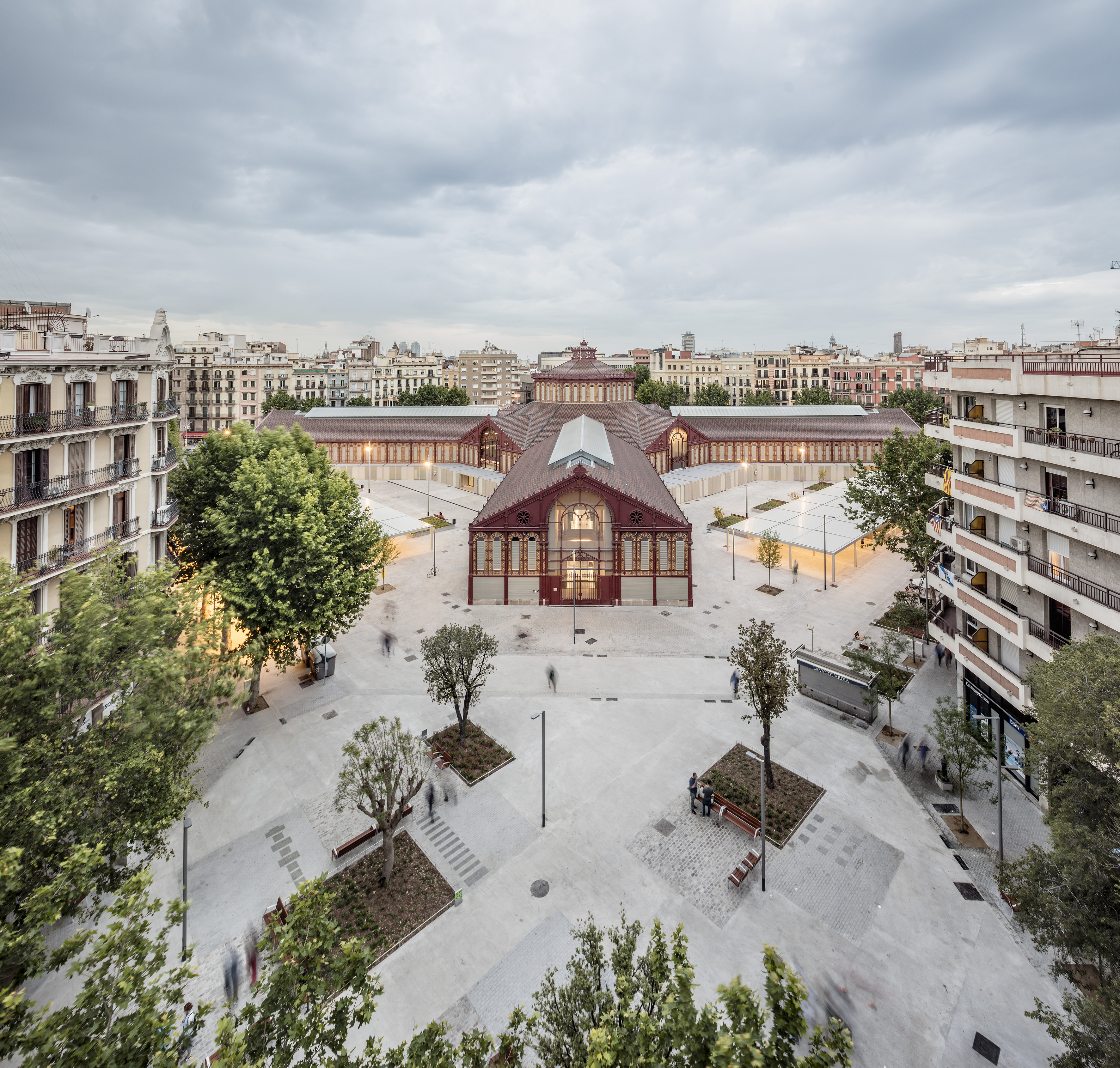 Mercat de Sant Antoni, the refurbishment project involved pedestrianizing many of the surrounding streets.[Photo: Brian Gallagher]
Mercat de Sant Antoni, the refurbishment project involved pedestrianizing many of the surrounding streets.[Photo: Brian Gallagher]Sant Antoni is having a moment right now, catalysed by the extraordinary refurbishment of the neighborhood food market which incorporates remains of the medieval city walls. There’s a second-hand book market at the weekends and many of the surrounding streets have been pedestrianised which draws fascinating new life. The boundary to Sant Antoni on one side is Paral.lel, the street where most of the city’s nightlife happens, and on the other side the Raval, a neighbourhood that has changed little over the centuries, with echoes of the nearby Mediterranean port.
There’s an urban legend that during the winter the Sant Antoni area is a little warmer than the rest of the city, and a little cooler in summer because of the shadow cast by the Montjuïc mountain that dominates its views.
With so much happening this year, together with all the permanent attractions, there has never been a better time to start planning a holiday in the Ciudad Condal, a popular alternative name for Barcelona that references its aristocratic past. ||
